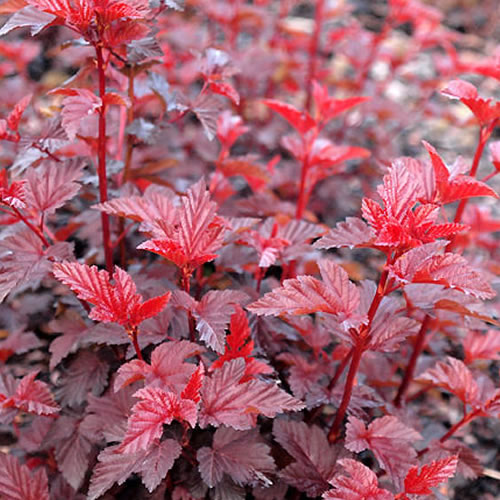We at the NYSIPM program are always informed and entertained by the writings of CCE St. Lawrence’s Paul Hetzler. We couldn’t pass this one up! Even Santa Claus himself cannot grant a wish for a white Christmas—it is a coin toss whether the holiday will be snow-covered or green this year. A verdant landscape is…Continue Reading Dreaming of a Local Christmas–post courtesy of Paul Hetzler
Educator Bee-Guiles Audiences… Meet Excellence in IPM Award Winner Jen Lerner
Educator bee-guiles audiences with enthusiasm and results, earns Excellence in IPM award A 13 year veteran of Putnam County, Lerner’s work as an invasive species educator, native plant and pollinator advocate, and turfgrass researcher has demonstrated her commitment, enthusiasm and mastery of IPM tools and tactics. Promoting IPM through education, demonstrations, and inclusive programs, Lerner…Continue Reading Educator Bee-Guiles Audiences… Meet Excellence in IPM Award Winner Jen Lerner
Sorry, I Can’t Help You [grow that horribly invasive plant].
Today’s post is from Matt Frye. FYI: (He didn’t just show up on our door talking ticks or rats! And we’re glad he escaped the vines to join our program.) Kudzu is an invasive vine that was introduced from Japan to the United States in 1876. In its heyday, kudzu was planted extensively throughout the…Continue Reading Sorry, I Can’t Help You [grow that horribly invasive plant].
Spotted Lanternfly: A Foe You Should Know
Ryan Parker, NYSIPM Program/Extension Aide II, has spent plenty of hours facing Spotted Wing Drosophila. Today he’s discussing the newest spotted pest. Adult spotted lanternfly. Photo by Emelie Swackhamer, Penn State University, Bugwood.org Tree of heaven. Photo by Chuck Bargeron, University of Georgia, Bugwood.org Tree of heaven (Ailanthus altissima) is just heavenly to a spotted…Continue Reading Spotted Lanternfly: A Foe You Should Know
New Field Crops and Livestock Coordinator Joins NYS IPM
Greetings! I’m Jaime Cummings, the new Field Crops and Livestock Coordinator at NYS IPM. My job? To work with field crop and livestock farmers on more than 3 million acres statewide who grow corn, hay, and other field crops and contribute to New York’s livestock industry. These farmers know all too well the problems that…Continue Reading New Field Crops and Livestock Coordinator Joins NYS IPM
The Invasive of the Month Is … (Drum Roll)
Drum Roll: The Spotted Lanternfly Southeastern Pennsylvania, the epicenter of spotted lanternfly’s arrival in 2014, might seem far enough away to give us in New York prep time for dealing with this new pest, a weak flyer that usually hops to get around. But with the spotted lanternfly (Lycorma delicatula—and SLF for short), all bets…Continue Reading The Invasive of the Month Is … (Drum Roll)
The Craziest of Worms
They sound kind of cute, right? “Crazy worms” that could actually amuse you? Gyrating in a box of soil, say, sort of like disco dancers? (I’m showing my age here.) Oh. And trust me; I’m not going off topic here: for many kinds of fish, fishing season started a few days ago. A date that…Continue Reading The Craziest of Worms
Hiring Now: Four New NYS IPM Posts
The New York State IPM Program seeks four new staff to amplify our IPM outreach and research for farms and communities around New York. Here are the positions (three of them new) we seek to fill: Biocontrol Specialist (Extension Associate) Alternative Weed Management Specialist (Extension Associate) Coordinator for the Network for Environment and Weather Applications…Continue Reading Hiring Now: Four New NYS IPM Posts
For IPM, Looking Back Means Looking Ahead
2015 marks our 30th anniversary here at NYS IPM. With age comes a new approach to our Year in Review — to our annual report. Yes, as always our focus is real science for real people. But “commodity driven” has long been our organizing principle. This year our Year in Review will be different —…Continue Reading For IPM, Looking Back Means Looking Ahead
Beauty and the Battle Against Invasive Plants: IPM Can Help

In New York and around the world, invasive plants rank among the top reasons that the stability of native ecosystems are under threat. Consider the prickly barberries that swallow woodland understories whole. The Norway maples that outcompete sugar maples and out-shade wildflowers. The — well, let’s just stop. Because it doesn’t get better. Sure, those…Continue Reading Beauty and the Battle Against Invasive Plants: IPM Can Help